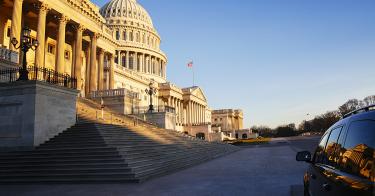Thursday, after years of work, the U.S. House of Representatives passed the Financial CHOICE Act. Members of the House Financial Services Committee, Chairman Jeb Hensarling (R-Texas), and his staff, should be congratulated for crafting the first piece of legislation to include serious financial reform ideas since the 2008 financial crisis.
Anyone interested in actually fixing the problems that brought on the 2008 financial crisis should be rejoicing. The shamelessly misnamed Dodd-Frank Wall Street Reform and Consumer Protection Act of 2010 did nothing to reform Wall Street, protect consumers, or end taxpayer bailouts.
Instead, the 800-plus page Dodd Frank Act expanded the failed regulatory approach that helped create the crisis. It relied on the federal government to plan, protect, and prop up the financial system. Far from ending the too-big-to-fail problem, Dodd-Frank enshrined it into law.
The CHOICE Act repeals some of the worst features of Dodd-Frank and includes sensible reform ideas that would strengthen financial markets. (More on those below.)
Pundits have been quick to pronounce the CHOICE Act “dead on arrival” in the Senate. Democrats won’t support the bill. They see Dodd-Frank as sacred and will generally resist repealing any part of it. Thus, the Senate’s 60 vote-threshold impedes enacting the reforms in CHOICE.
Yet Senate Republicans can still pass key sections of the CHOICE Act – perhaps even the entire bill – with only the 52-seat majority they currently hold. They can do so through the budget reconciliation process.
Senate rules require that budget bill provisions be “germane” to budgeting and avoid increasing the deficit. Does the CHOICE Act meet those requirements? Yes, indeed. The nonpartisan Congressional Budget Office (CBO) recently estimated “that enacting the legislation would reduce federal deficits by $24.1 billion over the 2017-2027 period.”
That report is a green light for the Senate, leading to the question: What would President Trump do?
As luck would have it, the White House has made its position very clear:
The Administration thanks Chairman Jeb Hensarling for his leadership on the important issues addressed by the Financial CHOICE Act. The Administration supports passage of the substitute amendment to H.R. 10 as a necessary and important step in moving financial reform legislation through the Congress. Upon passage, the Administration looks forward to working with the Senate on arriving at a final piece of legislation.
This statement, of course, is in addition to the administration’s (previously released) Core Principles for Regulating the United States Financial System. Those principles include, among others, the following ideas:
- Empower Americans to make independent financial decisions and informed choices in the marketplace, save for retirement, and build individual wealth.
- Prevent taxpayer-funded bailouts.
- Foster economic growth and vibrant financial markets through more rigorous regulatory impact analysis that addresses systemic risk and market failures, such as moral hazard and information asymmetry.
- Make regulation efficient, effective, and appropriately tailored.
- Restore public accountability within federal financial regulatory agencies and rationalize the federal financial regulatory framework.
So the U.S. House and the Executive Branch are both clearly on the same page.
Now America must wait for Senate Majority Leader Mitch McConnell (R-Ky.) and Senate Banking Chairman Mike Crapo (R-Idaho). It’s up to them to implement reforms that will strengthen financial markets, end bailouts, and protect taxpayers.
One of the most important ideas in the CHOICE Act is a regulatory off-ramp. This provision, also known as a capital election, provides regulatory relief to banks if they choose to use higher equity capital than the ratio currently required.
The capital election is an incredibly simple yet powerful idea: if a bank chooses to improve its ability to absorb losses, it earns regulatory relief. There is, after all, little reason to heavily regulate banks that can absorb their own financial risks. This type of provision could ultimately be expanded to provide even more regulatory relief and build even stronger markets.
The CHOICE Act also, among many other good things, undoes the most harmful parts of Dodd-Frank. In particular, it:
- Eliminates the ability of the Financial Stability Oversight Council (FSOC) to identify firms that regulators believe are too big to fail.
- Eliminates the same problem with respect to Financial Market Utilities (FMUs).
- Eliminates Dodd-Frank’s Orderly Liquidation Authority, a new avenue for federal bailouts that allows federal regulators to seize troubled financial firms—with minimal judicial review—and close down their affairs.
- Radically reshapes the Consumer Financial Protection Bureau (CFPB), a Dodd-Frank agency with unparalleled rulemaking, supervisory, and enforcement powers over virtually every consumer financial product and service.
- Repeals the Volcker Rule, the incredibly wasteful and misguided Dodd-Frank provision that ignores that banks make risky investments every time they make a loan.
The case has been made against Dodd-Frank. The House has done its job, and the Trump administration is practically begging for the chance to sign a reform package based on the CHOICE Act.
The Senate has the next move.
https://www.forbes.com/sites/norbertmichel/2017/06/13/america-waits-on-the-senate-for-financial-reforms/#1140b1e825df
This piece originally appeared on Forbes.com



